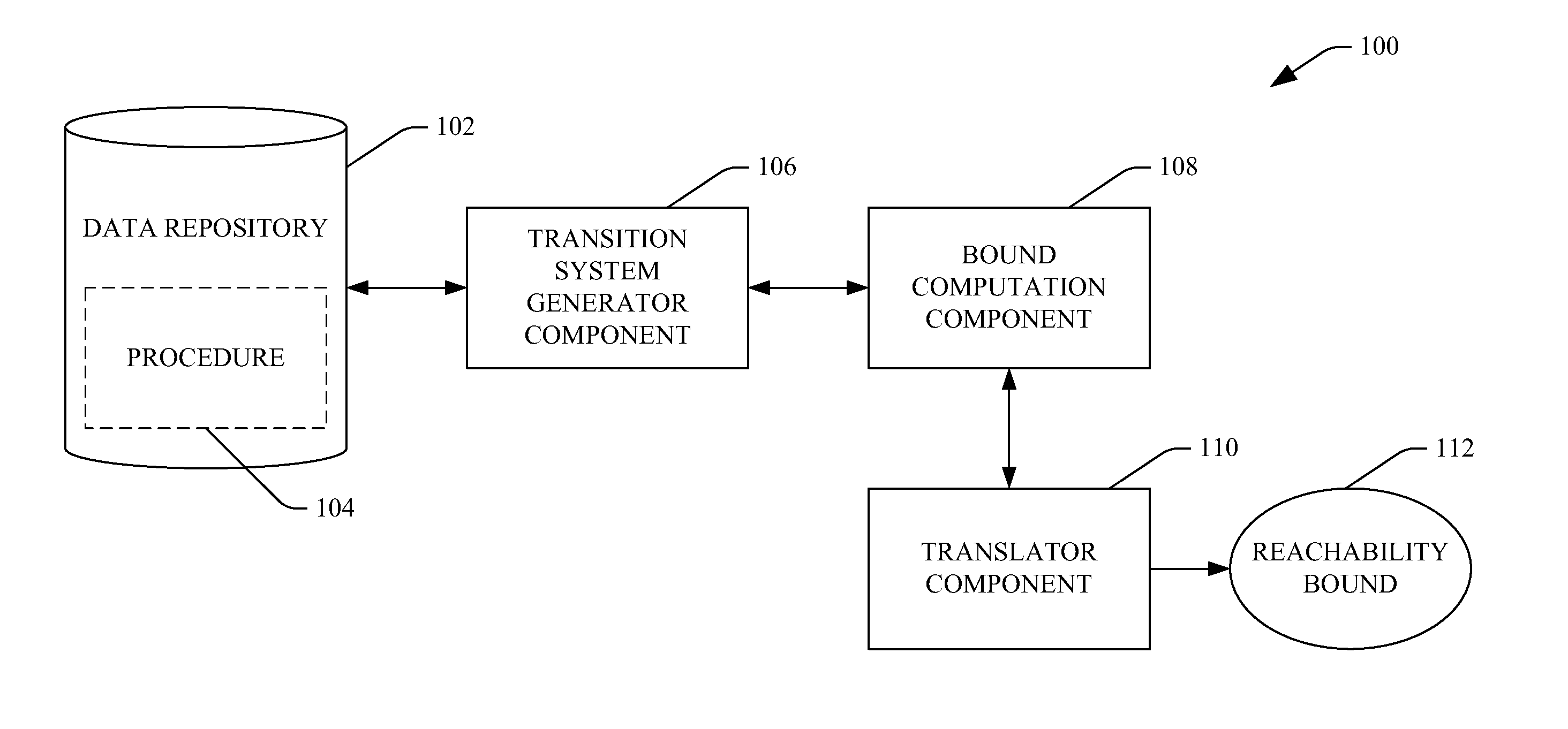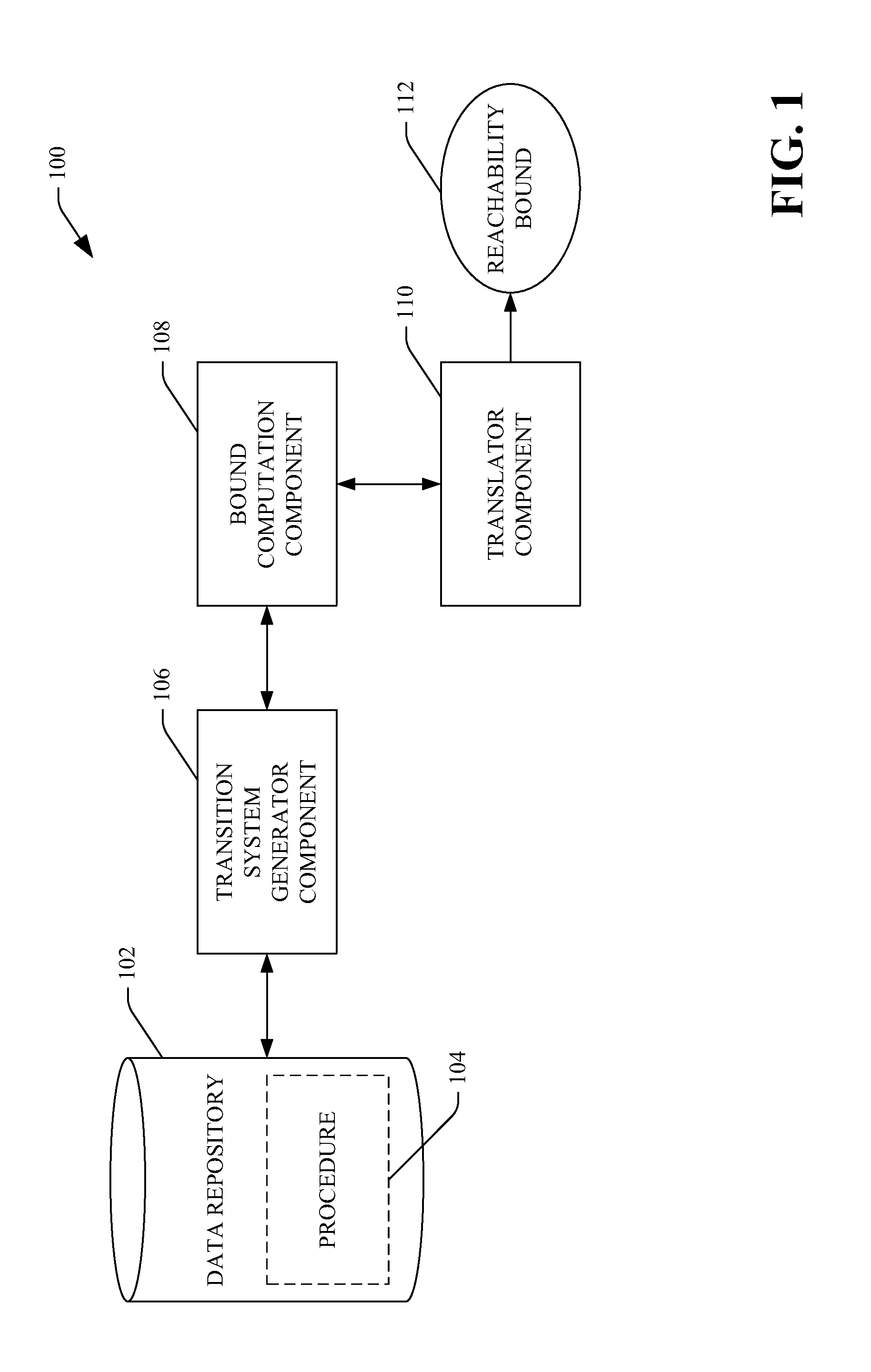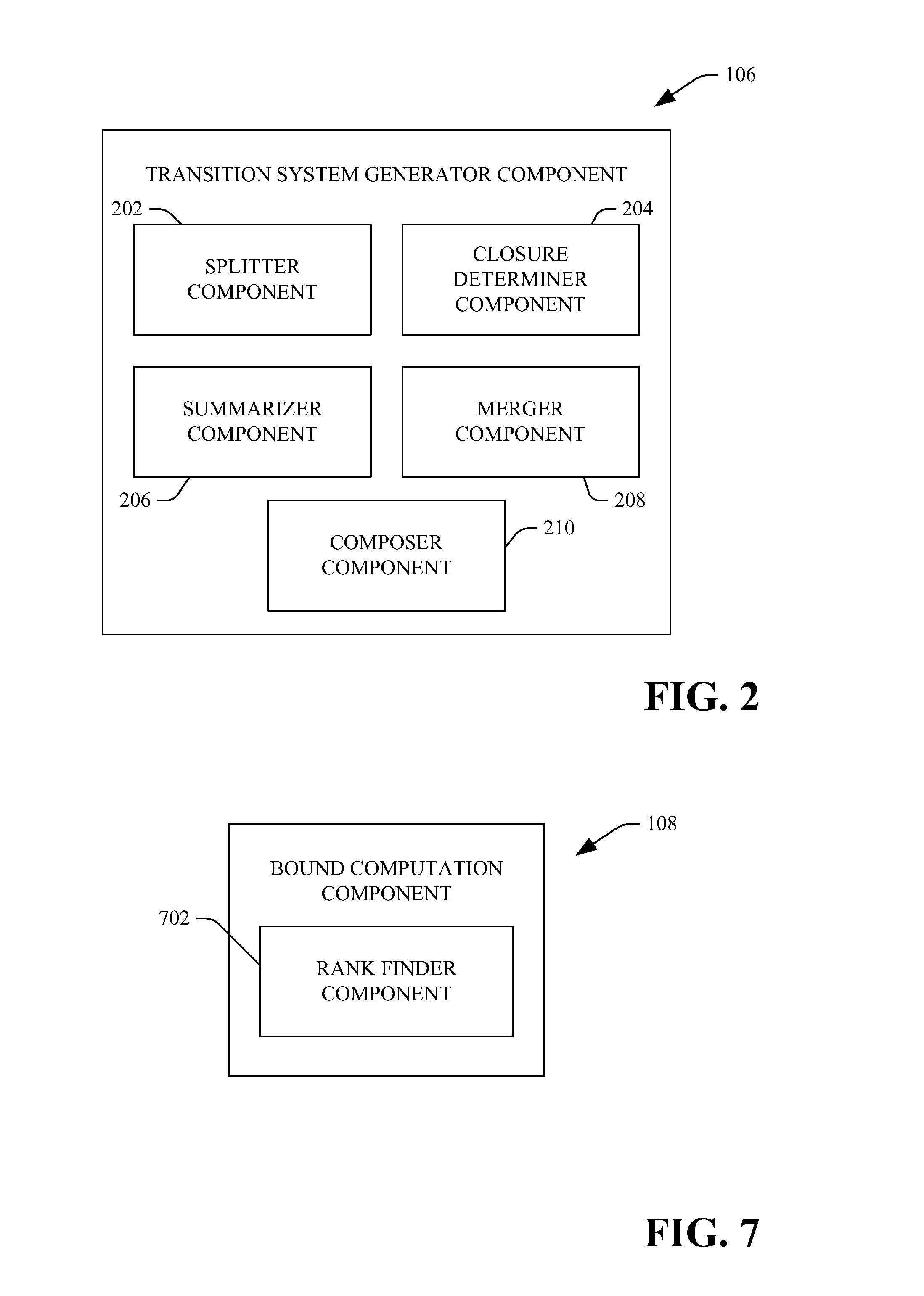Computing a symbolic bound for a procedure
a symbolic bound and procedure technology, applied in computing, error detection/correction, instruments, etc., can solve the problems of inconvenient operation, inconvenient monitoring, and inability to accurately determine the number of times that a control location executes in a program, and achieve the effect of avoiding inconvenient operation and avoiding inconvenient operation
- Summary
- Abstract
- Description
- Claims
- Application Information
AI Technical Summary
Benefits of technology
Problems solved by technology
Method used
Image
Examples
Embodiment Construction
>FIG. 4 is a graphical depiction of a summarization of a nested loop.
[0014]FIG. 5 is a graphical depiction of an example composition.
[0015]FIG. 6 is a graphical depiction of an example merging operation.
[0016]FIG. 7 is an example depiction of a component that facilitates computing a bound based at least in part upon a transition system pertaining to a control location of a procedure.
[0017]FIG. 8 is flow diagram that illustrates an example methodology for computing a reachability bound with respect to a control location of a procedure.
[0018]FIG. 9 is a flow diagram that illustrates an example methodology for computing a bound using a particular bound computing rule.
[0019]FIG. 10 is an example computing system.
DETAILED DESCRIPTION
[0020]Various technologies pertaining to computing a reachability bound with respect to a certain control location in a program will now be described with reference to the drawings, where like reference numerals represent like elements throughout. In addition...
PUM
 Login to view more
Login to view more Abstract
Description
Claims
Application Information
 Login to view more
Login to view more - R&D Engineer
- R&D Manager
- IP Professional
- Industry Leading Data Capabilities
- Powerful AI technology
- Patent DNA Extraction
Browse by: Latest US Patents, China's latest patents, Technical Efficacy Thesaurus, Application Domain, Technology Topic.
© 2024 PatSnap. All rights reserved.Legal|Privacy policy|Modern Slavery Act Transparency Statement|Sitemap



